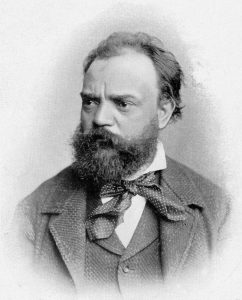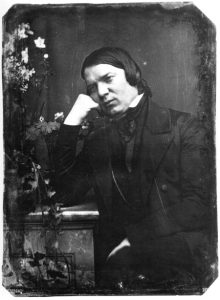
By Robert Croan
FORT LAUDERDALE — The South Florida Symphony is providing a real service to the local community with its summer chamber music series, showcasing this orchestra’s excellent first-desk players in three monthly concerts in Miami and Fort Lauderdale.
The second of this year’s programs [seen June 16 in Fort Lauderdale’s Center for Spiritual Living] offered two 19th-century piano quintets (scores for piano and string quartet): Dvořák’s Quintet No. 2 (in A major, Op. 81), and Schumann’s Quintet (in E-flat Major, Op. 44). These are the two seminal works for this combination, and the present performance was, frankly, a knockout.
The players — pianist Tao Lin, violinists Huifang Chen and Aleksandr Zhuk, violist Felicia Besan and cellist Christopher Glansdorp — were all first-rate. Not only were they technically up to their assignments, but first and foremost, they exuded the joy of making music together, which is the very essence and spirit of chamber music. In the intimate setting of the small CSL auditorium, the audience could make a personal connection with the performers on stage, creating a feeling of mutual participation on all sides.
Dvořák’s Second Piano Quintet, which opened the program, is actually the later of the two works, composed in 1887, 45 years after Schumann’s groundbreaking opus. It’s also more expansive, rambling and longer. Dvořák paid homage to his elder role model, adding, however, the folk melodies and dance rhythms of his native Bohemia. The SFSO players dug into the music with relish, imparting a strong, symphonic character to the opening movement. The lower strings were prominent here as well as later in the work, their tenor-bass sonorities enhancing the quasi-orchestral effect.
The heart of this piece is its quirky slow movement — a dumka, a lament of Ukrainian origin, first stated quite beautifully by cellist Glansdorp, the others taking it up in turn — alternating with lively episodes that shift the mood back and forth. Dvořák’s distinctive evocation of folk styles continued in the Scherzo — a furiant, molto vivace — with shifting accents that the performers brought out with gusto and a sense of fun that spilled over into the final movement. Note especially the intermittent fugato sections that paid homage not just to J.S. Bach, but to the Schumann quintet that had been Dvořák’s inspiration.

Schumann’s opus for piano and string quartet was probably the first work by a major composer for that combination. Schubert’s earlier Trout Quintet, for example, had pitted the piano against violin, viola, cello and double bass. The compositional issue with chamber music for piano and strings is that the hefty modern piano — a relatively new instrument when Schumann composed the piece in 1842, does not blend with the other instruments. This can be a double-edged sword for composers, who may want to showcase the keyboard sound in one place, yet create conversational dialogues with the remaining instruments elsewhere.
Schumann, who composed all his chamber music between 1842-53, strove for equality among the five players. The relationship between keyboard and strings here is quite different from the famous piano concerto written for the composer’s wife Clara a decade before. This, too, was written with Clara in mind, although she became ill at the time of the first reading, and the substitute pianist in the first (private) performance of the quintet was no one less than Felix Mendelssohn, who happened to be a close family friend. Although Clara did play the public premiere the following year, Schumann later insisted on a younger male pianist, commenting that “a man understands that better.”
Chauvinism and modern mentalities aside, Schumann’s Piano Quintet is a gorgeous piece. The brilliant opening movement uses the traditional sonata form exposition, posing two contrasting themes to represent first the fiery side that the composer referred to as the style of “Florestan,” with the second, contemplative theme representing his “Eusebius.” This was in keeping with what the ancient Greeks called Dionysian and Apollonian, though it may also point toward tendencies that led to the composer’s oncoming mental illness. There was no hint of schizophrenia in this rendition, however. These players knew exactly what the music required, and proceeded with a unity of purpose matched by their collective technical security.
The slow movement is often described as a funeral march, but there’s also a hint of humor in its jerky rhythmic patterns — something that might also have been appropriated to accompany the antics of a Disney cartoon (Elmer Fudd sneaking up on Bugs Bunny?). Sacrilegious to say this, perhaps, but I’ve always found this movement to be less than funereal. In any case, the performers took it seriously, maintaining razor-sharp precision and transparency of texture.
The whirlwind scherzo, in itself a tribute to Mendelssohn, was a virtuoso romp, while the exuberant finale brought the audience to its feet and elicited the exhilarating rhythmic applause often heard in concerts abroad, but rarely in the United States.